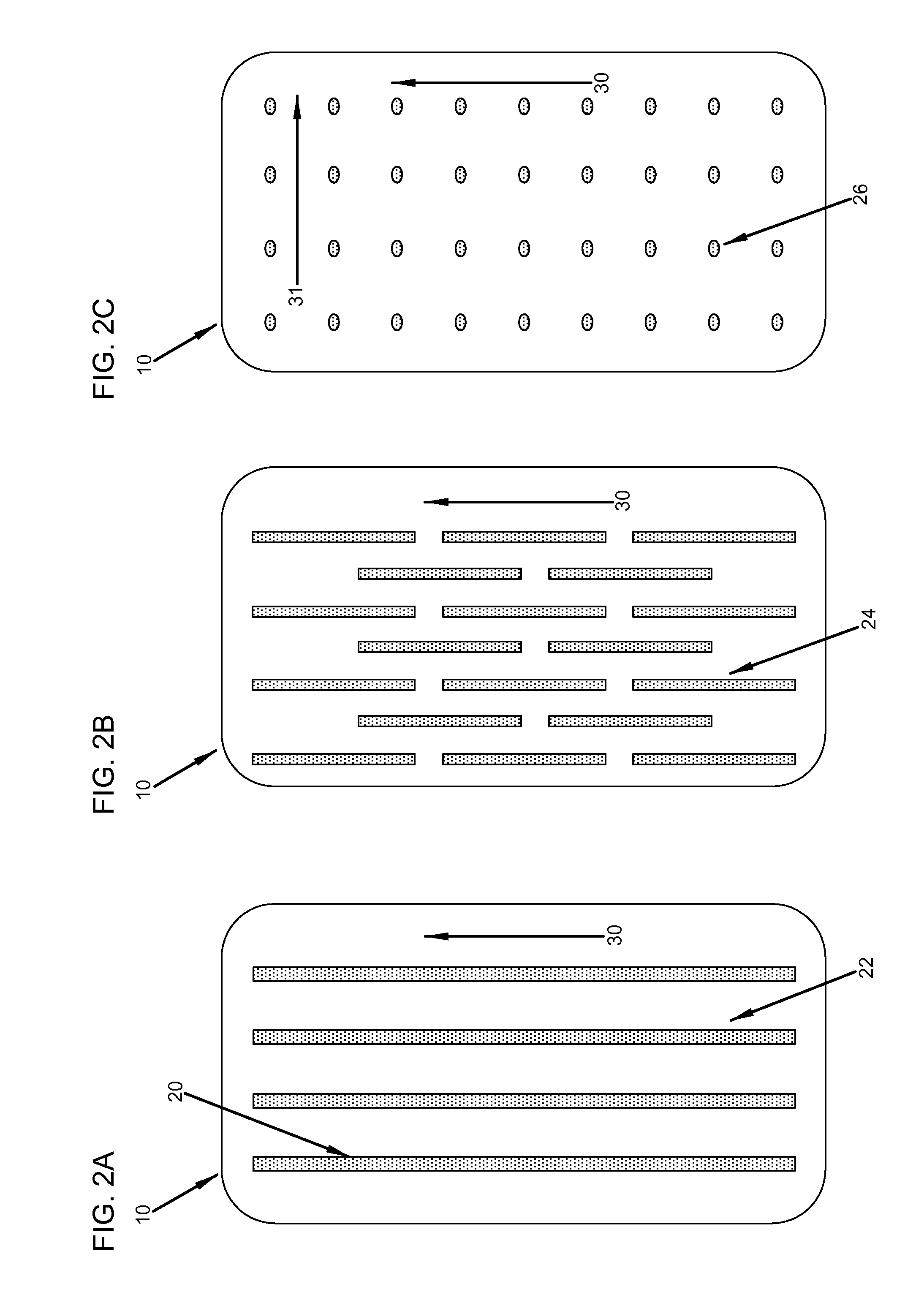Fugitive adhesive and method
a technology of adhesive and fugitive adhesive, applied in the direction of heat-activated film/foil adhesive, wrapping, paper coating, etc., can solve the problems of adhesive bond failure and loss of bonding properties, and achieve the effect of controlling the overall viscosity of adhesive and sharp melting poin
- Summary
- Abstract
- Description
- Claims
- Application Information
AI Technical Summary
Benefits of technology
Problems solved by technology
Method used
Image
Examples
example 1
[0106]The following materials by weight percent of the total composition were used to make a fugitive adhesive composition:
Wgt % ofRaw MaterialSuppliercompositionSASOLWAX ® H-1Sasol Chemical Industries of40.0Johannesburg, South AfricaESCOREZ ® 5400ExxonMobil Corporation of39.8(tackifier)Irving, TXKRATON ® SBC G-Kraton Polymers U.S. LLC20.01652of Houston, TXIRGANOX ® 1010Ciba Geigy Ltd. of Basel,0.2Switzerland
To form the composition, ESCOREZ® 5400 was added to a vessel and heated for 10 minutes. Mechanical mixing was started at a moderate rate of speed while the KRATON® and IRGANOX® materials were slowly added over the next 25 minutes. While mixing was continued, the wax was slowly added over a 15-minute period. The composition was then allowed to mix an additional 15 minutes to assure uniformity. The final composition temperature was 350-360° F.
[0107]A portion of the composition was removed for analysis. The composition was found to have a molten Gardner Color of 1-2, Brookfield The...
example 2
[0109]Using the technique employed to blend the composition of Example 1, the following composition was formed:
Wgt % ofRaw MaterialSuppliercompositionNat 155 soy waxMarcus Oil and Chemical Corp. of50.0Houston, TXESCOREZ ® 5400ExxonMobil Corporation of19.5Irving, TXVECTOR ® 6241ADexco Polymers LP of Houston, TX30.0IRGANOX ® 1010Ciba Geigy Ltd. of Basel,0.5Switzerland
[0110]A portion of the composition was removed for analysis. The composition was found to have a molten Gardner Color of 2-3, Brookfield Thermosel Viscosity (spindle SC4-29) of 12,300 cP at 250° F., 1825 cP at 300° F., and 800 cP at 350° F. The Mettler softening point was determined to be 176° F.
example 3
[0111]Using the technique employed to blend the composition of Example 1, the following composition was formed:
Wgt % ofRaw MaterialSuppliercompositionNat 155 soy waxMarcus Oil and Chemical Corp. of50.0Houston, TXEPOLENE ® C-18Westlake Chemical Corp. of5.0Houston, TXESCORENE ® UL-ExxonMobil Chemical Company of29.57750Houston, TX150 Paraffin WaxExxonMobil Chemical Company of15Houston, TXIRGANOX ® 1010Ciba Geigy Ltd. of Basel,0.5Switzerland
[0112]A portion of the composition was removed for analysis. The composition was found to have a molten Gardner Color of 2-3, Brookfield Thermosel Viscosity (spindle SC4-29) of 1650 cP at 300° F., 1150 cP at 325° F., and 850 cP at 350° F. The Mettler softening point was determined to be 160° F.
PUM
| Property | Measurement | Unit |
|---|---|---|
| thick | aaaaa | aaaaa |
| thick | aaaaa | aaaaa |
| size | aaaaa | aaaaa |
Abstract
Description
Claims
Application Information
 Login to View More
Login to View More - R&D
- Intellectual Property
- Life Sciences
- Materials
- Tech Scout
- Unparalleled Data Quality
- Higher Quality Content
- 60% Fewer Hallucinations
Browse by: Latest US Patents, China's latest patents, Technical Efficacy Thesaurus, Application Domain, Technology Topic, Popular Technical Reports.
© 2025 PatSnap. All rights reserved.Legal|Privacy policy|Modern Slavery Act Transparency Statement|Sitemap|About US| Contact US: help@patsnap.com



